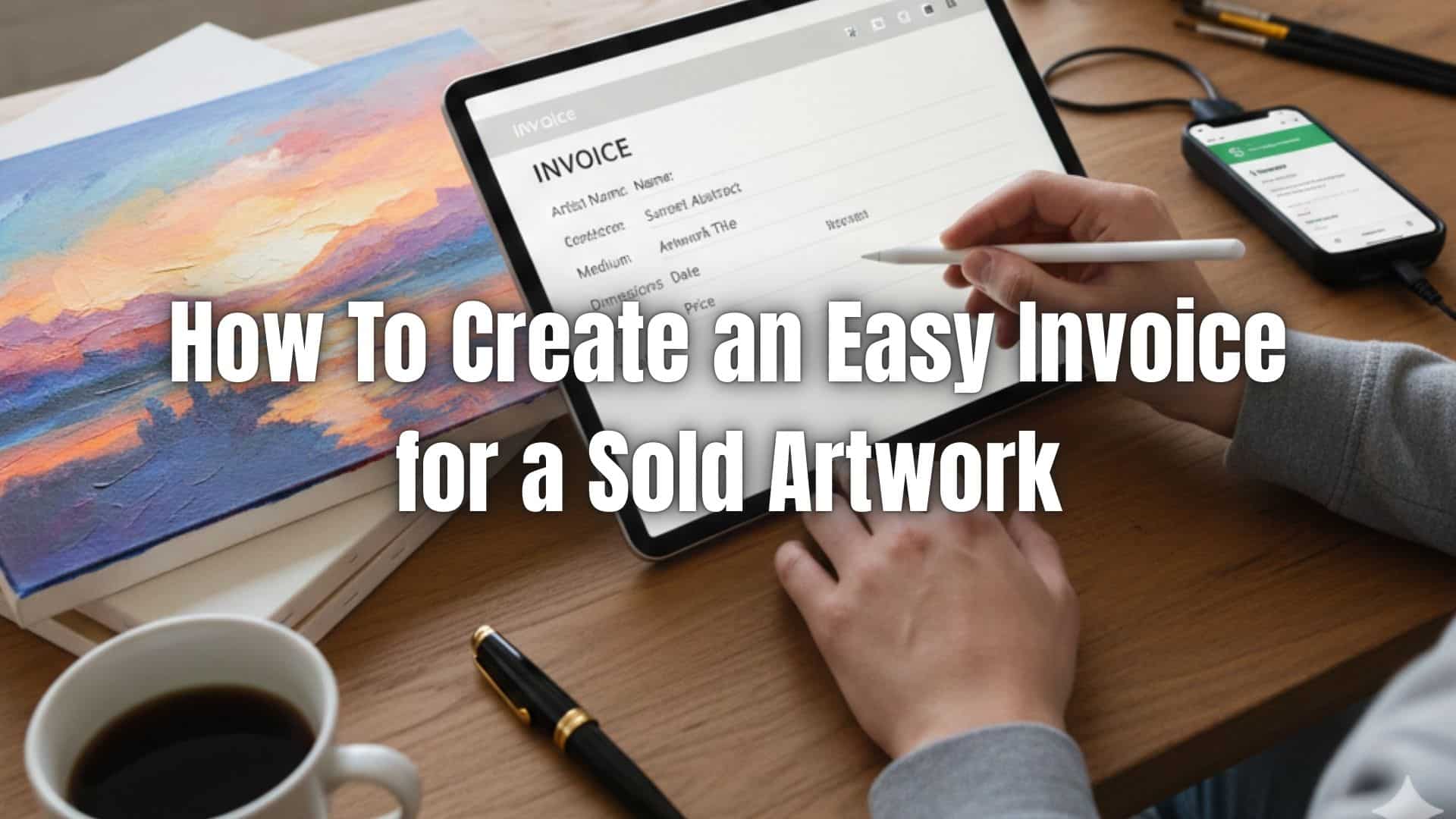Selling your artwork is more than completing a creative piece. It is also about managing the business side of your craft. Whether you are a painter, sculptor, illustrator, or digital artist, knowing how to prepare an invoice for artwork helps you get paid properly and maintain professional relationships. Many artists overlook invoicing because it feels intimidating or too “business focused,” but it is an essential part of turning your art into a sustainable career.
Table of Contents
ToggleWhat Is Invoicing and Why It Is Important to Artists
Invoicing is the process of sending a document to your buyer requesting payment for your artwork. It allows you to list what was purchased, the amount due, and the terms for payment. A clear invoice protects you from misunderstandings and ensures both you and your buyer understand the details of the sale.
A proper invoice for artwork is important because it:
- Serves as proof of the transaction
- Helps you track your sales for tax reporting
- Adds professionalism to your art business
- Prevents confusion about pricing, delivery, or rights usage
Even if you are just starting out, sending invoices helps build your reputation and sets expectations with buyers.
Creating the Invoice and What Items It Should Include
When creating an invoice for artwork, make sure it is clear, organized, and easy for your buyer to understand. Every invoice should include:
- Your name or studio name and contact details
- Buyer’s name and contact information
- A description of the artwork
- Artwork dimensions, medium, and unique details
- Price of the artwork
- Payment terms and accepted payment methods
- Any taxes or additional fees
- Delivery or shipping details if applicable
Presenting this information helps buyers feel confident in the purchase and gives you a reliable record of each sale.
Why Invoice Numbers Are Important
Adding an invoice number to your invoice for artwork may seem small, but it is incredibly useful. Invoice numbers act as unique identifiers for each sale. This helps you track your transactions, avoid duplicate invoices, and stay organized as your art business grows. Buyers may also use invoice numbers when referencing purchases, especially if they purchase multiple pieces from you over time.
Why You Should Include the Date on Your Artwork Invoice
The date on your invoice is just as important as the invoice number. It marks when the artwork was sold and when payment is expected. This helps keep your financial records accurate and simplifies tax preparation. Including a clear date also helps avoid disputes about due dates or delivery schedules.
Payment Terms on the Invoice
Payment terms explain when the buyer must pay and what methods you accept. You may choose immediate payment, payment upon delivery, or a specific number of days after the invoice date. Clear payment terms help avoid late payments and ensure that you are paid fairly and on time.
Common payment terms include:
- Payment upon receipt
- Net 7, Net 15, or Net 30
- Deposit requirements if applicable
- Accepted methods such as bank transfer, card, PayPal, or cash
The clearer your terms, the smoother your sale.
Putting a Title in Your Invoice
Every invoice for artwork should include the title of the piece. Art titles help identify the work clearly and add professionalism. If the artwork does not have a title, you can provide a descriptive name. Including the title makes the invoice feel more personal and gives the buyer a documented connection to their new piece.
Sending the Invoice with ReliaBills
Once your invoice for artwork is ready, sending it through ReliaBills gives you a smooth, professional, and efficient process. Instead of creating documents manually each time, you can build a custom template and use it whenever you sell a piece. With just a few clicks, you can enter the artwork details, price, and buyer information, then send a polished invoice instantly.
ReliaBills also includes powerful automation features to help artists manage payments more easily. The platform sends automatic reminders to clients who haven’t paid yet, so you don’t have to follow up yourself. It also supports recurring billing, which is incredibly useful for artists offering installment plans, monthly memberships, subscription-based art services, or ongoing commission work. Recurring billing ensures clients are billed on schedule, helping you maintain steady cash flow without extra effort.
Another major benefit is complete transparency over your income. ReliaBills lets you see which invoices are paid, pending, or overdue, all in one dashboard. You can also accept online payments, making it fast and simple for buyers to pay securely. By keeping all your invoicing, reminders, and recurring billing in one place, ReliaBills frees up time so you can focus on creating your next piece of artwork rather than managing paperwork.
How to Create a New Invoice Using ReliaBills
Creating an invoice using ReliaBills involves the following steps:
Step 1: Login to ReliaBills
- Access your ReliaBills Account using your login credentials. If you don’t have an account, sign up here.

Step 2: Click on Invoices
- Navigate to the Invoices Dropdown and click on Invoices.
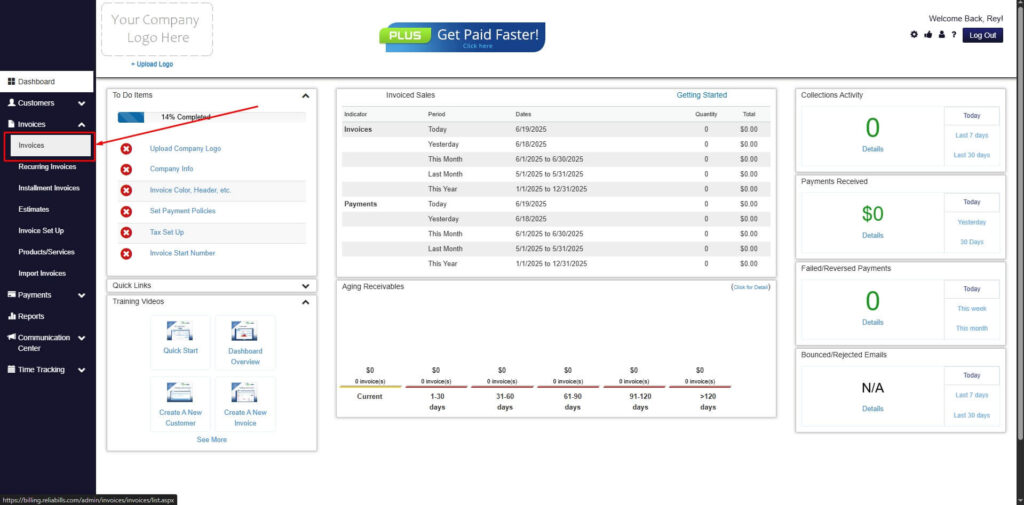
Step 3: Click ‘Create New Invoice’
- Click ‘Create New Invoice’ to proceed.
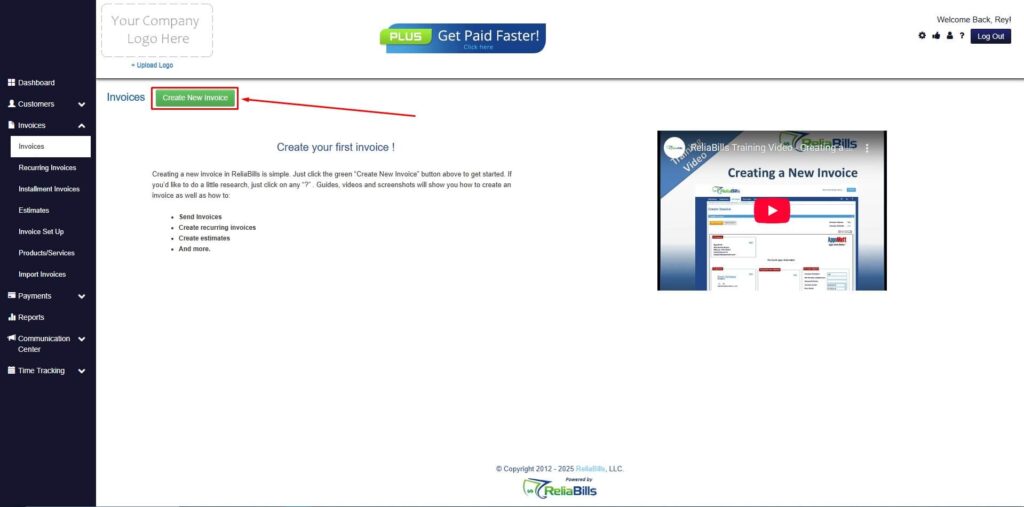
Step 4: Go to the ‘Customers Tab’
- If you have already created a customer, search for them in the Customers tab and make sure their status is “Active”.

Step 5: Create Customer
- If you haven’t created any customers yet, click the ‘Click here’ to create a new customer.
- Provide the First Name, Last Name, and Email to proceed.
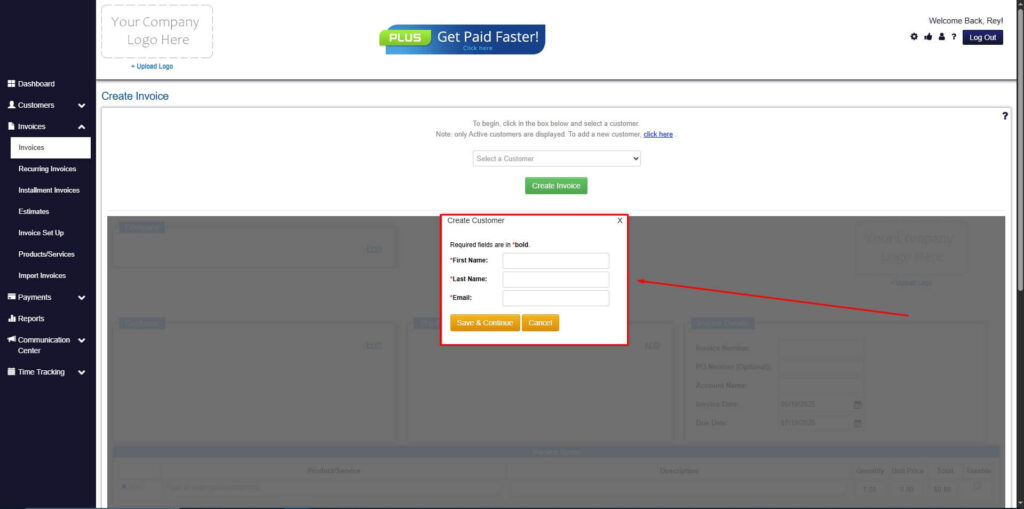
Step 6: Fill in the Create Invoice Form
- Fill in all the necessary fields.
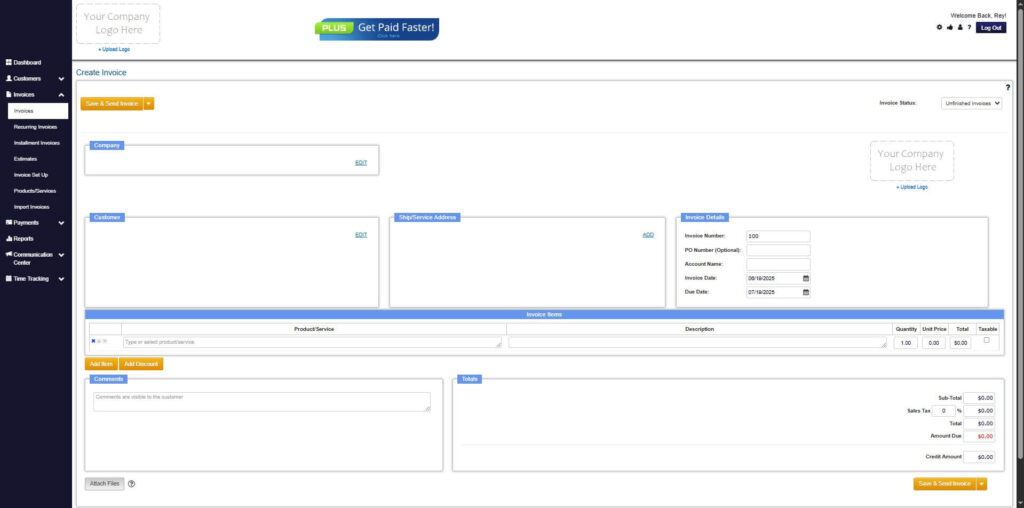
Step 7: Save Invoice
- After filling out the form, click “Save & Send Invoice” to continue.
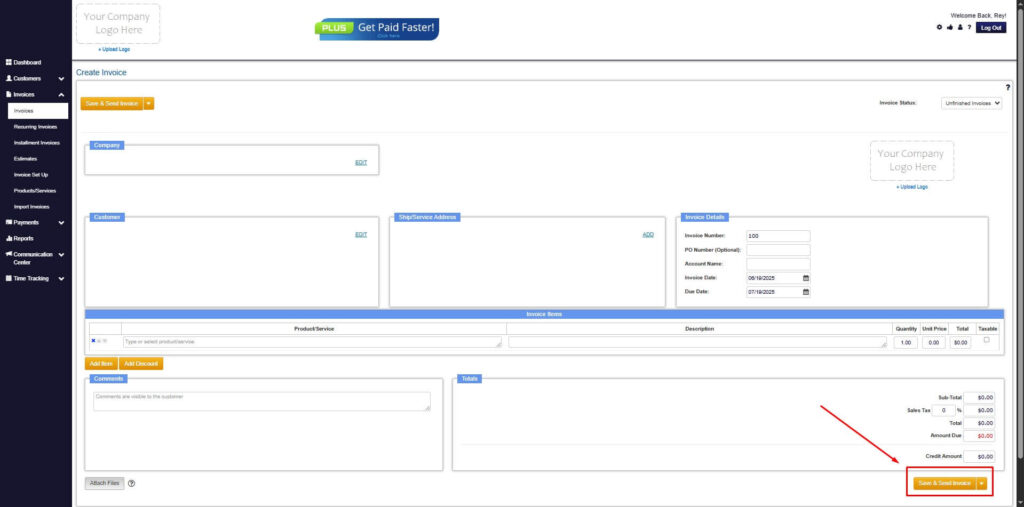
Step 8: Invoice Created
- Your Invoice has been created.
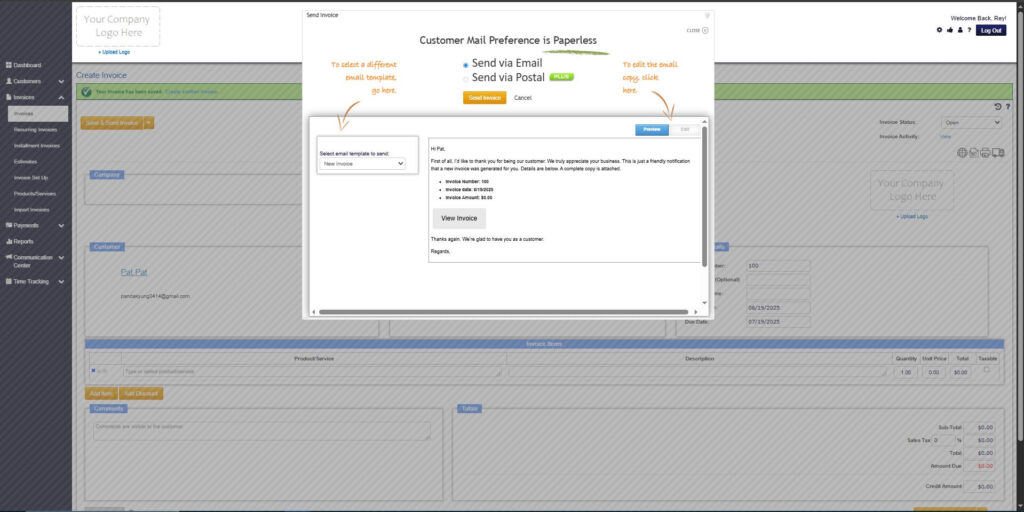

Frequently Asked Questions
1. Do I need an invoice even for small artwork sales?
Yes. Even small sales should be documented to keep your records complete and organized.
2. Can I send digital invoices?
Absolutely. Most buyers prefer digital invoices because they are easy to access and store.
3. What if I sell through galleries?
Galleries often handle invoicing, but it is still good practice to keep your own records.
4. Should I include taxes?
This depends on your local tax laws. Many artists include sales tax when required.
Conclusion
Creating an invoice for artwork is an important step in running your art business. It protects your interests, helps you stay organized, and adds professionalism to every sale. By including essential details like invoice numbers, dates, artwork descriptions, and payment terms, you create a clear and trustworthy record of each transaction. Using tools like ReliaBills can make the process faster and more efficient, allowing you to focus on your creative work while still managing your business with confidence.

